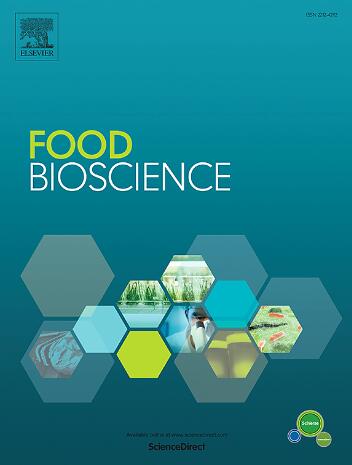From waste to therapeutics: Extraction methodologies and biological properties of bioactive compounds from fruit and vegetable waste
IF 4.8
1区 农林科学
Q1 FOOD SCIENCE & TECHNOLOGY
引用次数: 0
Abstract
Agriculture-based food byproducts cause enormous environmental stress and a market value loss of 132 billion euros per year. The most wasted product groups in Europe are fruits, vegetables, and cereals. However, food byproducts often contain even more bioactive compounds than edible parts; for example, phenolic compounds and flavonoids are generally stored in seeds and peels. Recent evidence suggests that agricultural waste has therapeutic properties, ranging from antiaging and skin hydration activity to anti-inflammatory, wound healing, or anticancer effects. This review performed a detailed literature search on the therapeutic potential of fruit and vegetable waste via PubMed. It provides a comprehensive review and suggests novel uses and rationalized approaches, with the final aim of providing a practical guide to conducting further experiments in the field. The types of bioactive compounds and their abundance in agricultural waste are initially discussed. Variables affecting the extraction yield, such as the effect of sample pretreatment, the choice of the most appropriate solvent, and different solvent extraction methodologies, are then explored. The therapeutic properties and molecular mechanisms are finally critically discussed.
从废物到疗法:从果蔬废弃物中提取生物活性化合物的方法和生物特性
以农业为基础的食品副产品造成了巨大的环境压力和每年 1 320 亿欧元的市场价值损失。欧洲浪费最多的产品类别是水果、蔬菜和谷物。然而,食品副产品通常含有比可食用部分更多的生物活性化合物;例如,酚类化合物和类黄酮通常储存在种子和果皮中。最近的证据表明,农业废弃物具有治疗特性,从抗衰老和皮肤水合活性到消炎、伤口愈合或抗癌作用,不一而足。本综述通过 PubMed 对果蔬废弃物的治疗潜力进行了详细的文献检索。它提供了一份全面的综述,并提出了新的用途和合理化方法,最终目的是为在该领域开展进一步实验提供实用指南。首先讨论了农业废弃物中生物活性化合物的类型及其丰富程度。然后探讨了影响提取率的变量,如样品预处理的影响、最合适溶剂的选择以及不同的溶剂萃取方法。最后对其治疗特性和分子机制进行了深入探讨。
本文章由计算机程序翻译,如有差异,请以英文原文为准。
求助全文
约1分钟内获得全文
求助全文
来源期刊

Food Bioscience
Biochemistry, Genetics and Molecular Biology-Biochemistry
CiteScore
6.40
自引率
5.80%
发文量
671
审稿时长
27 days
期刊介绍:
Food Bioscience is a peer-reviewed journal that aims to provide a forum for recent developments in the field of bio-related food research. The journal focuses on both fundamental and applied research worldwide, with special attention to ethnic and cultural aspects of food bioresearch.
 求助内容:
求助内容: 应助结果提醒方式:
应助结果提醒方式:


